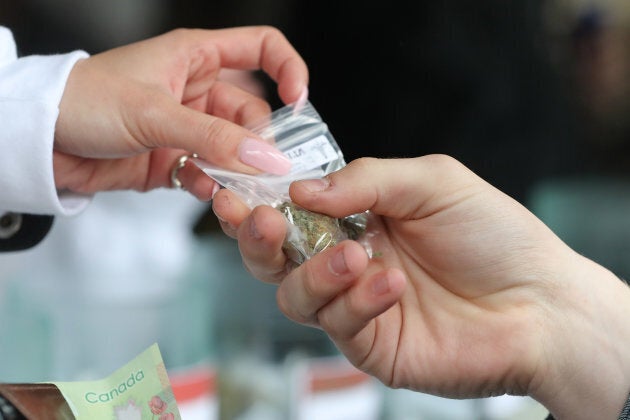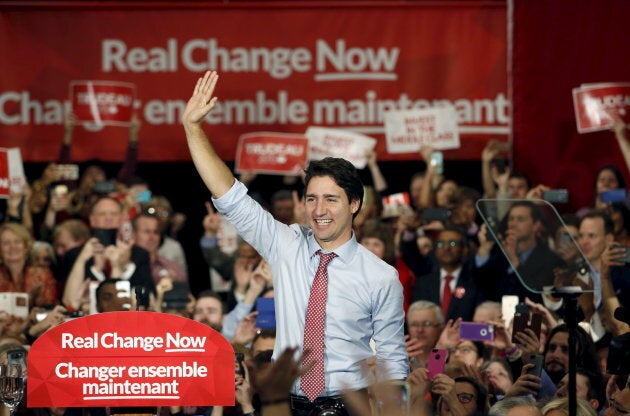The looming inevitability of marijuana legalization in Canada is quickly approaching.
With little more than eight months left before federal laws are expected to be passed, there are still many questions to be answered. Some of these questions are as simple as: who, what, where, when and how... so let's get to it!

First on the docket: what. What will be eligible for legal sale?
Marijuana will be legally available for sale once the laws are passed, but edibles won't be — at least not yet.
So you won't be able to buy your edibles right away, but there is still hope for the future. Federal regulations relating to their sale are expected to follow.
In the meantime, after legalization, there is nothing preventing consumers from making their own edibles at home.
In terms of how marijuana will look, we can expect that packaging will be subdued. It will be free from bright colours, flashy logos and any cute, animated mascots that could make it attractive to minors.
We can expect that provinces will likely adjust the age limits to be congruous between alcohol and marijuana.
Now let's turn our minds to the question of who. Who will be legally able to access marijuana once the laws pass?
This will come down to a matter of age.
While the federal government has set the minimum legal age for buying marijuana products at 18, provinces will have some degree of discretion. They will have the option to raise it if they see fit.
For practical reasons, we can expect that provinces will likely adjust the age limits to be congruous between alcohol and marijuana.
It seems like a fair wager that our provincial government, here in British Columbia, will set the minimum age for purchasing marijuana at 19. Whether or not this will be sufficient to control access to the drug, and keep it out of the hands of minors, is still yet to be seen.

Next up, where? Where will consumers be able to legally purchase marijuana?
More likely than not, our province will adopt a "mixed model" approach. This will be similar to our current approach with alcohol. It will involve both private marijuana sales and government-run stores.
Under this model, there is reason to believe that marijuana products may be sold in government liquor stores and private beer and wine stores, as well as in existing dispensaries and some pharmacies.
In fact, the large number of illegal marijuana dispensaries operating in this province is expected to play a key role in the legislative process. The infrastructure, for the most part, is already in place. This means less expense for taxpayers in terms of setting things up.
It also means that our streets won't look much different. There will be less of a "shock factor" that other, more marijuana-conservative provinces may experience.
The question is whether those illegal sources will continue to survive.
This brings us to the question of how. How will legal dispensaries obtain their product?
At this point, most dispensaries get their supplies from illegal sources. Although illegal, many of these producers have been around for decades. As a result, they have built up a great deal of goodwill.
As legalization approaches, the question is whether those illegal sources will continue to survive.
To become legal, producers will be required to comply with particular requirements, all of which are necessary to bring them under the fold of the law. This is likely to be cost-prohibitive to many smaller producers. They are likely to be barred from operations.
As it stands today, British Columbia is the second-largest producer of legal marijuana in Canada. Our province is home to 17 officially authorized licensed producers of marijuana and marijuana products.
This number is expected to rise substantially once the laws pass.

Which brings us to our last question — when? When do we expect marijuana will become legal?
The federal government has promised that the drug will be legal by July 1, 2018.
But this deadline has elicited concern.
Some are worried that police forces will not be ready. Others say that provinces will be unprepared to implement the changes required to facilitate the sale of legal marijuana.
For the most part, the answers to these strategic questions concerning implementation will be left up to the provinces to answer. Whatever they choose will affect how legalization looks for citizens. It will have significant societal implications.
After all, how the drug is produced, sold and distributed will have a direct bearing on our experiences with legal marijuana. Making sure that provinces are prepared for legal marijuana is of paramount importance.
Needless to say, we've got a lot of work to do over the next eight months.
Follow HuffPost Canada Blogs on Facebook
Also on HuffPost: